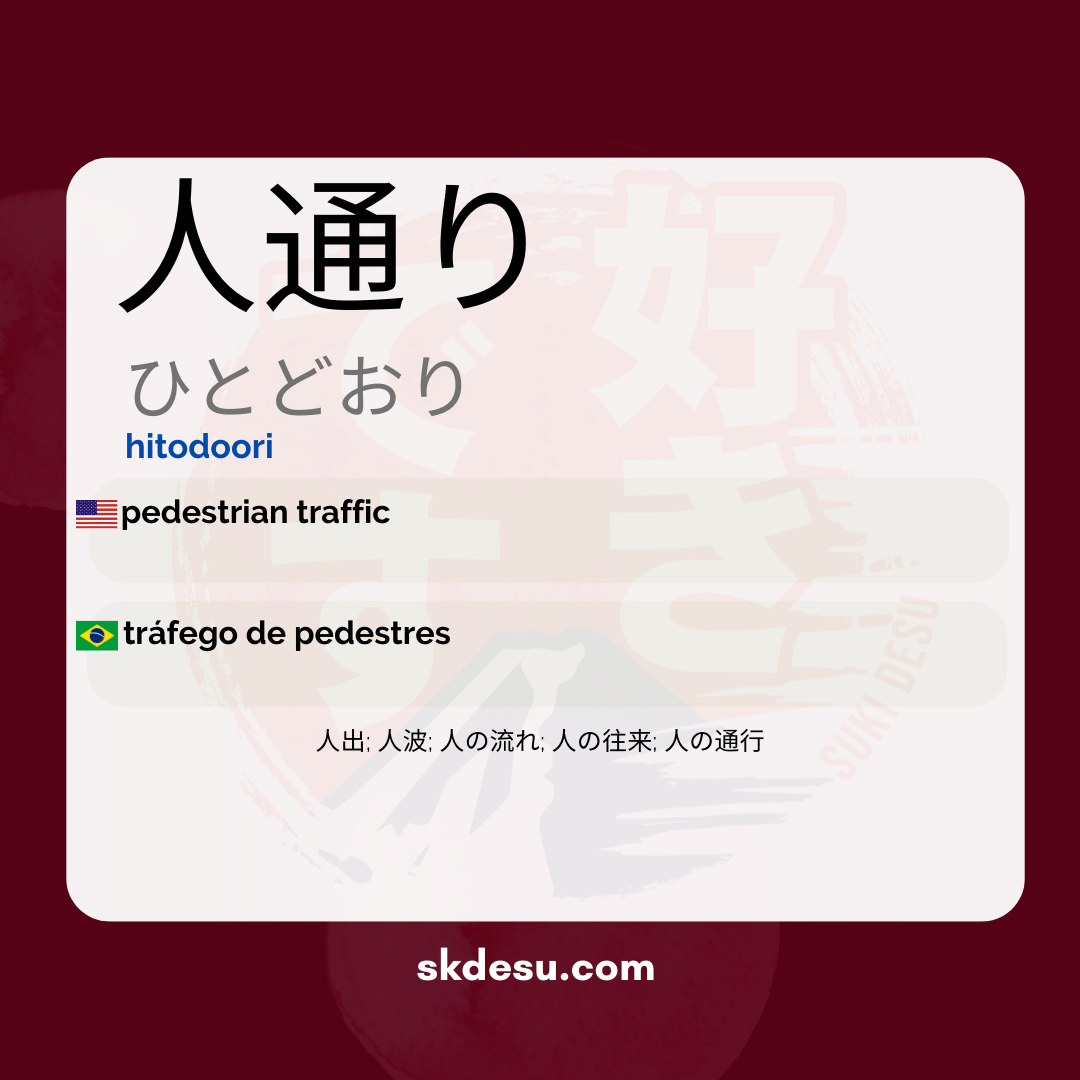Translation and Meaning of: 人通り - hitodoori
The word 「人通り」 (hitodoori) is understood as the movement or flow of people in a specific area, usually referring to the number of people passing by a location within a certain period. This expression is especially used in urban contexts, where population density and the constant movement of people are relevant issues for urban planning, commerce, and tourism.
In etymology, 「人通り」 is composed of two kanji: 「人」 (hito), which means "person," and 「通り」 (toori), which means "traffic" or "passage." The term, therefore, literally denotes the concept of "traffic of people" or "passage of people." The kanji 「人」 originates from the idea of an individual, while 「通り」 derives from an ideogram that combines the notion of a path or flow, often associated with circulation on streets or paths.
The use of the term 「人通り」 dates back to the growth of Japanese cities, when the movement of people became a key indicator of economic activity and urban vitality. In the social and economic context, areas with high 「人通り」 are often associated with prosperous commercial regions, where stores and service establishments tend to thrive due to the large number of pedestrians. Therefore, understanding the 「人通り」 of a region is essential for various areas, such as business, urban planning, and even public safety.
In addition to its literal and economic meaning, the word also carries cultural implications. In cities in Japan, for example, observing the 「人通り」 can be a contemplative activity, revealing social patterns and daily routines of the citizens. From a tourist perspective, understanding the flow of people in certain areas can influence the planning of visits to historical landmarks or events, maximizing the cultural experience and avoiding excessively crowded places.
Vocabulary
Expand your vocabulary with related words:
Synonyms and similar words
- 人出 (Hito de) - Flow of people, commonly used to describe the number of people in a given place.
- 人波 (Hito nami) - Crowd of people, emphasizing the undulating and lively nature of a large group.
- 人の流れ (Hito no nagare) - Flow of people, referring to the constant movement of individuals in a specific direction.
- 人の往来 (Hito no ourai) - Movement of people, often used to describe the exchange of people between two places.
- 人の通行 (Hito no tsuukou) - Traffic of people, focusing on the act of individuals passing through a specific place.
Related words
Romaji: hitodoori
Kana: ひとどおり
Type: Noun
L: jlpt-n2
Translation / Meaning: pedestrian traffic
Meaning in English: pedestrian traffic
Definition: There are many people passing by.
Quick Access
- Vocabulary
- Writing
- Sentences
How to Write in Japanese - (人通り) hitodoori
See below a step-by-step guide on how to write the word by hand in Japanese. (人通り) hitodoori:
Example Sentences - (人通り) hitodoori
See below some example sentences:
Hitodorigai ga ooi machi wa katsuki ga aru
The city with a lot of people movement is lively.
A city with many people is lively.
- 人通りが多い - it indicates that there are many people circulating in the area.
- 街 - means city or neighborhood.
- は - topic marker particle.
- 活気がある - it expresses that there is energy, movement, and animation in the area.
Other Words of this Type: Noun
See other words from our dictionary that are also: Noun

